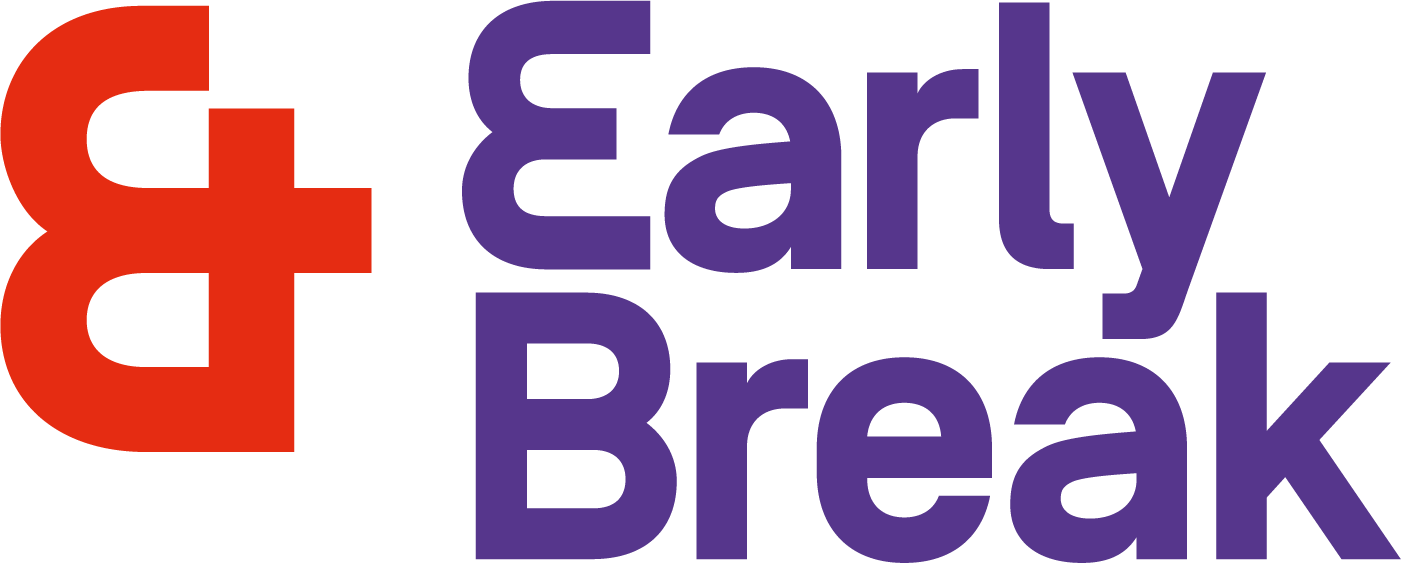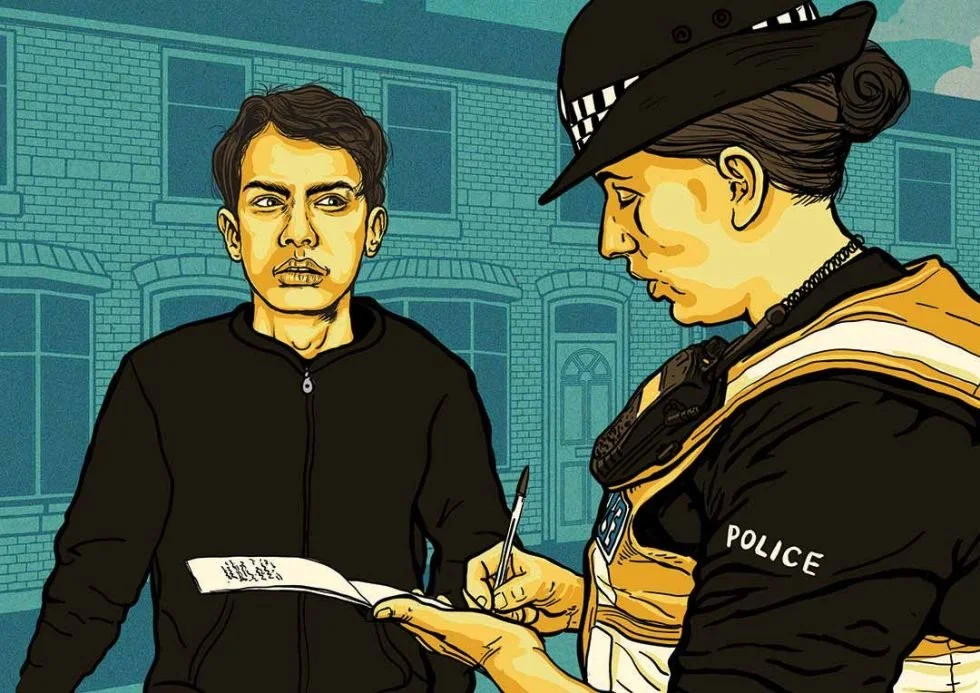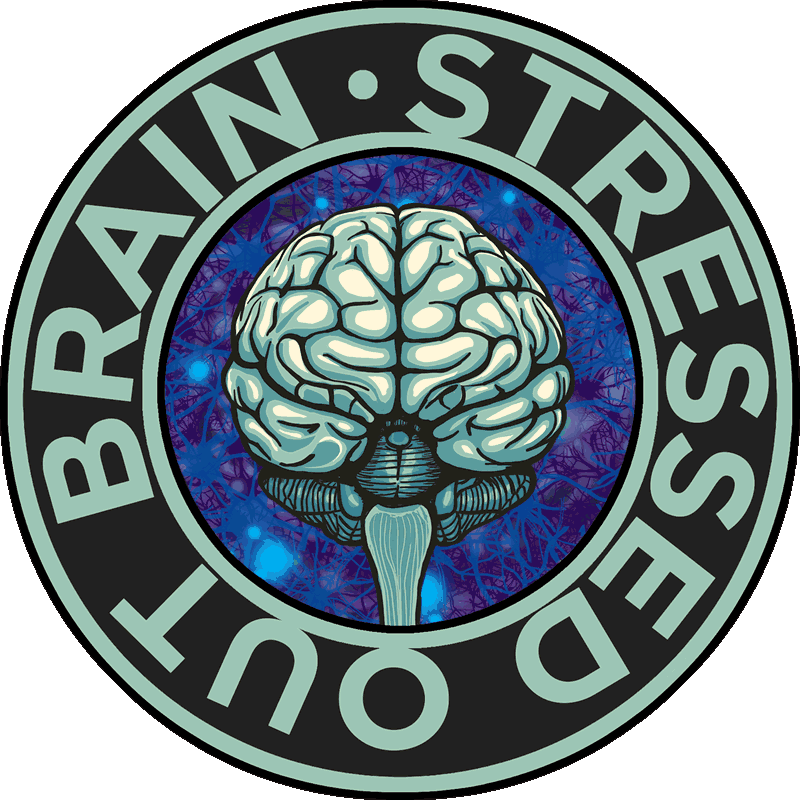CANNABIS
& the Cannabinoids

Cannabinoids
What is a cannabinoid?
Whatever method you use to take a drug (smoking, sniffing, swallowing, etc.), once inside your body, the drug travels in your bloodstream before attaching to parts of the cells in your brain and body called receptor sites. Rather like locks and keys, different drugs have their own unique sites – so, for instance, opiate drugs (like heroin) attach themselves to opiate sites. Drugs that attach themselves to cannabinoid sites are called… you’ve guessed it… cannabinoids.
What is THC?
The main cannabinoid found in the cannabis plant that gets you high is called THC (tetrahydrocannabinol). When THC attaches to your cannabinoid sites, it starts a chain reaction which alters the mix of the natural chemicals in the brain responsible for your thoughts, feelings and mood (called neurotransmitters). This is why smoking cannabis makes you feel roasted, toasted, stoned or totally wasted.
What is CBD?
CBD (cannabidiol) is the other famous cannabinoid found in the cannabis plant. CBD doesn’t get you high on its own, but it moderates the effect of the THC in cannabis, making for a more mellow and chilled-out effect.
What is a synthetic cannabinoid?
The drug Spice is made from dried plants and shrubs that don’t get you high, but they have been sprayed with chemicals (called synthetic cannabinoids) that do. They are called ‘synthetic’ because they are made in a lab in China, and ‘cannabinoids’ because, like real cannabis, they also attach themselves to your cannabinoid sites. There are hundreds of different synthetic cannabino,ids some of them are up to 800 times more potent than THC, which is why Spice is more addictive, more likely to cause mental health problems and is far more dangerous and toxic than real cannabis.

Herbal Cannabis
Hemp and hybrids
Sativa, Indica and Ruderalis are names for wild species of the cannabis plant that over thousands of years have adapted to grow in different climates. Some plants, known as hemp, have low concentrations of THC, so won’t get you high but are good for making things like rope. However, the weed you buy from your dealer is grown from hybrid plants. Hybrids are a result of cross breeding the wild plants with the most THC and growing them in a way that produces lots of female flowers (buds) as this is the part of the plant containing most of the THC. Hybrids may not be so good for making rope but are good at getting you stoned.
Skunk weed
A legendary cannabis hybrid plant called ‘Skunk No.1’ and was first produced in California in the 1970s by cross breeding the best plants from Colombia, Mexico and Afghanistan. Skunk came to Britain in the 1990s and is now a term used for any strong smelly weed. Although chemicals called ‘terpenes’ cause some of the smell, it’s recently been discovered that the distinctive skunky odour comes from chemicals (known as VSCs) which are also responsible for the stinky smell in garlic and Brussels sprouts.
Weed ‘strains’
Cannabis grown from seeds or cuttings that come from a specific variety of hybrid plant are known as strains. These strains are given names such as ‘Straw Dog’, ‘Gelato’, ‘Kush’ etc. Although the appearance, flavour and smell varies between strains, the potency still depends on the amount of THC and CBD in the plant. Recent tests in Greater Manchester have shown the average skunk weed contains about 15% THC with tiny amounts of CBD (less than 1/3 of 1%).
‘Cali weed’
As it is grown indoors under artificial conditions from the same seeds and cuttings, there is no reason why the weed grown in Britain should be any better or worse than weed grown anywhere else in the world. ‘Cali weed’ comes in fancy tins and packages with labels often claiming it is grown in California. However, you can buy the tins and labels from UK websites, so although it’s often good quality weed, your ‘Cali weed’ is more likely to have be grown in Longsight than Los Angeles. You’re probably paying three times the price for someone to put it in a tin.

Cannabis Products
Hashish (cannabis resin)
Hashish is traditionally made by separating the sticky resin from the buds, then drying and moulding them into a block. Good quality hashish (‘pollen’) has high levels of THC and CBD, although much of what’s available is low-grade ‘soap’ or ‘slate’ with less than 7% THC. More recently, Moroccan hashish has been made using hybrid plants, so it contains between 20% to 28% THC, nearly twice that of skunk weed, and, unlike traditional hashish, has very low levels of CBD.
Cannabis concentrates
Products made by extracting the THC from plants are known as cannabis concentrates. A variety of methods are used to produce illegal THC oils, such as ‘butane hash oil’ or ‘honey oil’. Other concentrated THC extracts, such as ‘shatter’ and ‘Rosin’, appear in a solid or waxy form. These products can contain more than 70% THC.
THC vape liquid
THC oil can be added to e-liquid and sold in bottles or ready-filled vape pens. Real THC vape oil/liquid is very expensive to buy. If you see it for sale at £10-20 on social media, it’s a rip-off. Young people in Greater Manchester have been taken to hospital after vaping what they bought as THC oil. Tests showed that they had actually been sold an e-liquid containing a synthetic cannabinoid …‘Spice’.
Medical cannabis and CBD oil
Specially licensed doctors can prescribe medicines with very high levels of THC, but this is very rare and you won’t find it for sale. When extracted from the cannabis plant, CBD can be classed as a medicine or a ‘novel food’ and can be legally sold on the high street. Some CBD oil is confusingly labelled ‘cannabis or THC oil’, but this has tiny amounts of THC. Anything strong enough to get you high can’t be sold legally.
Cannabis edibles
Though you can eat raw cannabis, it won’t have the same effects as cannabis that has been heated by smoking, vaping or cooking, as this turns the THC into the active form that gets you high. Cannabis edibles include cookies, chocolate, butter, drinks and sweets such as gummies. There is no way of knowing how much THC or CBD is in these edibles, as most are home-made, even if they come in fancy packets, as empty edibles packaging is also sold online. Store edibles that look like sweets safely away from small children.

Methods of Use
Cannabis and tobacco smoke
How quickly cannabis has an effect and how potent it is depends on the method you use to take it. Smoking cannabis usually with tobacco is by far the most popular method of use, as the effects are felt almost instantly, although most of the THC will not reach your brain as it literally goes up in smoke. Tobacco is highly addictive, and long-term use causes serious illness, including lung cancer. Smoking cannabis neat may avoid some of the risks from tobacco smoke, but any sort of smoke is harmful to the lungs. Cannabis smoke contains toxic chemicals that increase the risk of smoking-related illnesses such as bronchitis and worsen asthma.
Pipes and bongs
A bong is a way to get as much smoke into your lungs as quickly as possible. A water pipe, such as a bong, also cools the smoke, making it feel smoother and less harsh; however, this doesn’t make much of a difference to the risks from the smoke. Holding the smoke in your lungs will not increase the high, but it will cause more of the toxic chemicals in the smoke to enter your lungs. There is also a risk of COVID-19 if you share joints, pipes and vapes.
Vaping cannabis
Vaping is a way of heating cannabis without burning it. This produces a water-based vapour rather than harmful smoke. Some devices can vape herbal, solid or liquid, others can only handle e-liquid. Cannabis concentrates are often taken by dropping a small amount onto a hot surface and allowing it to vaporise before inhaling (known as ‘dabbing’). Although vaping is safer than smoking in a joint, pipe or bong, there may still be some risk of lung injuries.
Eating cannabis
When cannabis is eaten, about 90% of the THC reaches the brain, producing a stronger high than when it’s smoked. However, it takes an hour or so to have an effect. Getting impatient and taking more can be a big mistake. Eating cannabis can be a very intense experience and feel more like an LSD trip. It can also last for 8 hours rather than the normal 1-2 hours when it’s smoked. If you are eating cannabis, it’s safer to start with a small test dose and wait an hour before taking any more. As the old stoner saying goes, ‘you can always take more but you can never take less’. Eating cannabis should be avoided by people with existing mental health problems.

Effects & Side Effects
The effects of cannabis
The effects you get from cannabis depend on: the dose (how much you take); the potency (how much THC and CBD is in it); the method of use (if you smoke, vape or eat it); and if you have drunk alcohol or taken any other drugs at the same time. The effects you get also depend on your mood, where you are and who you’re with; for instance, being stoned will feel different if you’re locked in a police cell rather than at a party with your mates. Most people first try cannabis out of curiosity or because they want to join in with what their mates are doing. Not everybody who tries cannabis likes how it makes them feel, although most people consider the desirable effects to be euphoria (feeling fabulous), relaxation (feeling chilled) and increased sociability (talking absolute shite with your mates).
Cloudy with a chance of munchies
People use cannabis for all sorts of reasons, from creative thinking to relieving boredom. Some people use it to cope with bad feelings or past trauma. Being stoned affects your coordination, balance and judgment. It’s therefore best not to attempt anything more physically taxing than staring at a lava lamp. Making ice sculptures with a chainsaw or driving a car should definitely be avoided. Cannabis gives some people the urge to stuff their face with food, known as the ‘munchies’; while some get other urges. Having condoms handy with your stash of savoury snacks and sweets is a good idea, just in case you feel horny and hungry. If you are pregnant, cannabis should be avoided as it may result in reduced growth of your baby.
Memory and sleep
Even a small amount of cannabis will affect your memory, so it’s a waste of your time studying while you’re stoned. Set aside some cannabis free time if you have exam revision or homework. Many people love the racing thoughts and wild ideas that occur while they are high, but this is not so good if these racing thoughts happen when they are trying to get to sleep. Cannabis may cause you to sleep too much or not sleep enough, while some people become dependent on it to get them to sleep. If sleep becomes a problem, there are more practical ways to help get your sleep back on track than smoking weed.

Looking After Your Mates
Dealing with a whitey
Everybody is different in how cannabis affects them and the dose they can tolerate comfortably. Taking too much cannabis, especially if you have been drinking alcohol, can leave you pale, shaky, sweaty, dizzy, weak and feeling sick. You may puke or even pass out for a short while. This is known as ‘Pulling a whitey’ or ‘greening out’.
If friends are experiencing a whitey, stay with them and try and keep them sitting upright, although don’t force them. Some people think a sugary drink helps, but again, don’t force them to drink anything. If you are really concerned, it is best to call for help. About 350 people a year are treated in English hospitals for cannabis ‘poisoning’, mostly thought to be when they have taken cannabis concentrates, eaten cannabis or vaped something sold as THC that contained a synthetic cannabinoid (‘Spice’).
Dealing with paranoia
Every cannabis smoker is familiar with that uneasy, suspicious feeling that they are being watched or someone is out to get them. Nobody is quite sure what causes paranoia, but it is thought that cannabis makes you hyper-sensitive to any potential threat. Paranoia is more likely when you smoke cannabis in an unfamiliar place or with strangers, particularly when you’re stoned and they’re not. If you start to feel paranoid or freak out, go somewhere quiet where you feel comfortable and safe. Paranoia will wear off in an hour or so when the cannabis does.
If your mates become unwell or freaked out after taking cannabis, stay with them to calm and reassure them. Look after mates in the same way you would want to be looked after yourself.

Emotional & Mental Health
Psychotic disorders and depression
Psychotic disorders are very serious mental illnesses. Symptoms are like a really bad trip, but unlike a bad trip, it doesn’t go away when the drugs have worn off. They can be short-lived or long-term (known as schizophrenia). Cannabis may increase the risk of psychotic disorders in some people and make the symptoms worse for those who experience them. Risk is increased the younger you are when you start to use regularly, as your brain is still developing. Cannabis might also increase the risk of depression. However, it is complicated as some people use cannabis as a way to cope with their mental illness. Either way, serious mental illness needs to be treated by a doctor.
Cannabis, stress and anxiety
Stress and anxiety have nearly identical symptoms. Stress is usually caused by something happening, while anxiety is constant, excessive worry that doesn’t go away. If you’ve experienced prolonged or severe stress in childhood, your brain adapts to being in a constant state of alert, but this makes it difficult to deal with the everyday world as you grow up.
Using cannabis to cope with problems
Some people use cannabis to temporarily relieve the symptoms of stress and anxiety, which might work in the short term, although the anxiety can increase after the cannabis has worn off. Cannabis contains one cannabinoid (THC) that is likely to increase the risk of mental health problems and make symptoms worse, and another (CBD) that is more likely to help. If all you can get hold of is cannabis with high levels of THC, vaping or taking CBD oil might help.
If you use cannabis all the time, it’s difficult to tell if it’s helping or not. There is no harm in stopping for a while to see if things improve. Either way, there are other treatments and ways of coping with stress and anxiety that are much more effective than cannabis – it is not a long-term treatment option.
Some frequent cannabis users may be self-medicating the symptoms of cannabis withdrawal rather than stress and anxiety.

Tolerance & Dependence
Tolerance
If you use cannabis regularly, you build up a tolerance. This means you need a higher and higher dose to get stoned the way you did when you first started. Tolerance can take weeks, months or even years to gradually develop. A higher tolerance means you end up using more, so you spend more on weed. Increasing tolerance may also be a warning sign that you may have developed a cannabis habit.
If you find you are getting through your regular amount more quickly, it’s time to think about cutting back. As a general rule of thumb, avoid using cannabis too often (every day counts as often). Have days when you don’t use or restrict smoking to evenings or weekends. Don’t use more than you can afford to pay for (don’t get lay-offs from your dealer). Monitor your use by buying a set amount (every week/month), and if that runs out, go without for a while.
Withdrawal & Dependence
Most people use cannabis occasionally, at least to start with, but about one in ten cannabis users go on to develop a habit. This means that they crave cannabis and may experience withdrawal symptoms if they stop using – including losing their appetite, becoming anxious and moody, having trouble sleeping and getting weird dreams and night sweats. These withdrawals usually last a few days up to a few weeks. Cannabis withdrawal is not life-threatening, and many people manage to cut back or quit by themselves, but for others, it can be much harder.

Getting Caught
Possession (adults)
Most drug offences involve the police finding small amounts of cannabis in your pocket, bag, car, etc. (known as possession). The cannabis will be confiscated, but how you are dealt with depends on your age, previous offences and if you admit the offence. Adults (over 18) may be given a Cannabis Warning or a £90 fine (PND), but can also be given a community resolution or a conditional caution. These involve agreeing to participate in educational courses around drugs, doing unpaid work, etc. If you do go to court and are found guilty of possession of cannabis, you will most probably receive a fine; it is unlikely you will go to prison.
Possession (under 18)
If you are aged between 10 and 17, the police may take you home or arrest you and take you to a police station. Your parents/carers will be informed, and they or an appropriate adult, like a social worker, will be present during questioning. For first offences, you may be dealt with under an out-of-court disposal, which means you are likely to get a community resolution and could be referred to a service for support. If you don’t comply, you may end up with a youth caution. If it’s not your first offence or the police think you're dealing drugs, you might be charged and have to go to a Youth Court.
Supply/Dealing
If the police can prove that you sold or gave the drugs to someone else, or that you intended to do this, then you could be charged with supply or possession with intent to supply. Whether or not the charge is simple drug possession or intent to supply will depend on how much you’re caught with, the style of packaging (e.g. small amounts individually wrapped rather than one bigger bit) and whether anything else is found (e.g. Scales, bags, wads of cash).
Getting caught in school
Getting caught with drugs in school can sometimes be more of a hassle than being caught by the police. Supply is treated more seriously than possession, so get caught selling drugs and it will almost always lead to school exclusion, your parents or carers being told and your arrest by the police. Possession can still lead to all of the above, but it’s more likely that you will be seen as ‘having a problem’ – rather than ‘being one’.
Cannabis can be detected in the blood for several days after use, and drug driving is illegal as well as dangerous.

Getting Help
Getting help
Some people just like smoking weed and don’t see their use of cannabis as a problem… unless they get caught, of course. Others find that cannabis, alcohol or other drugs can affect school or work, cause difficulties with relationships and have a negative impact on emotional health and well-being. Smoking weed may not be the cause of all your problems, but it might have added to them or made things worse. It is often the case that a whole series of things have built up or gone wrong in someone’s life by the time they get help.
Being stoned affects your judgment and tends to encourage risk-taking behaviour like having unprotected sex or getting involved in some dodgy situations with some equally dodgy people. Lack of cash to pay for cannabis can lead to debt. Having dealers threaten you or your family, or having to walk around with a knife, paranoid that somebody is after you, is stressful.
Debt or the desire for weed you can’t afford can draw you into crime and risk you being exploited. Young people have been asked to hold on to, deliver or sell drugs, send nude pictures or perform sexual acts to pay for cannabis.
It is important to remember that even if you are in a situation that you can’t see a way out of, there is always help available. Young people and families are at the centre of everything Early Break do. Each young person sets their own goals and targets, and the role of their individual worker is they support them to achieve these goals.













